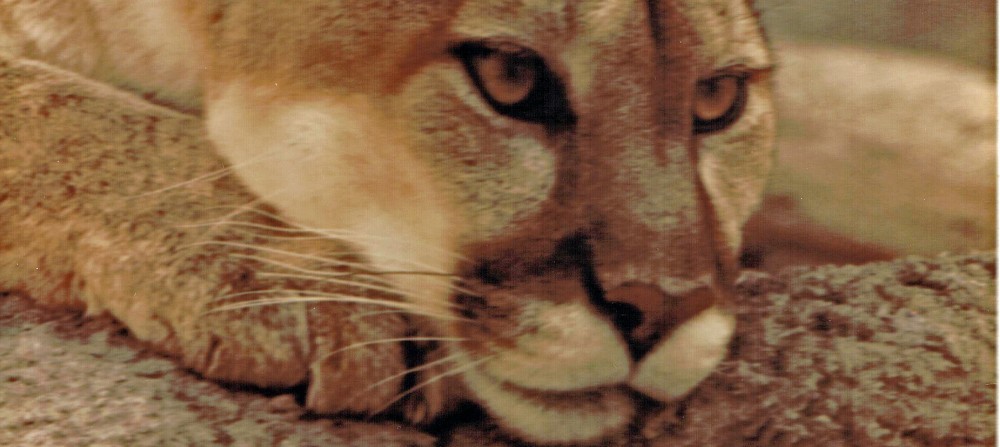Question: When does a state wildlife commission turn into a death commission? Answer: When it does what Nevada did last December. That’s when the Nevada Wildlife Commission approved a $212,000 raid on the state’s Heritage Fund, a reserve dedicated to wildlife conservation projects.
But instead of conservation, the Nevada Wildlife Commission redirected the Heritage Fund money to two fringe hunting groups, Hunter’s Alert and the Nevada Alliance 4 Wildlife. They, in turn, planned to funnel it to the federal Wildlife Services, the agency that specializes in killing some 1.5 million predators every year. Meanwhile, the state’s wildlife agency was told to stand down in its oversight duty concerning the expenditure to kill carnivores such as coyotes, ravens, mountain lions and badgers.
The situation is beyond controversial; it is nothing short of outrageous, though recently, federal wildlife officials say they won’t proceed with plans to kill lions and other carnivores unless there is full support in Nevada for the effort, reports the Reno Gazette-Journal.
Full support is not likely to happen soon. Cecil Fredi, the president of Hunter’s Alert, called the divisive situation over the decline of mule deer “a war.”
The hunter groups argue that if you kill the animals that kill mule deer and sage grouse, the population of prey animals will rebound. Studies, however, show that this doesn’t work, and in this case, Nevadans will be burdened with illegitimate expenditures to do something that’s bound to fail, while the real hardship will be to Nevada’s ecological systems.
The $212,000 allocation the state wildlife commission made from the Heritage Fund supplements an already sizable annual expenditure to kill lions and other predators. Nevada hunters are taxed $3 for each big game license they purchase to fund continued killing. The resultant annual budget is between $350,000 and $450,000. Additionally, the Nevada Department of Wildlife dedicates another $17,000-to-$25,000 to the cause, so that all together, the state’s wildlife department spends approximately $500,000 to kill native carnivores each year.
Tina Nappe, a former member of Nevada’s Wildlife Commission, blasted the commission in January, calling it “bloodthirsty for killing predators.” And a current commissioner, Mike McBeath, told the Reno Gazette-Journal that he was concerned that some of his fellow commissioners were trying to oust the state wildlife director because he opposed spending more money to kill predators.
The belief that killing carnivores will benefit deer was dismissed as early as 1941, by the hunter and conservationist Aldo Leopold in his essay, “Thinking Like a Mountain.” Wolves were seen then as evil and rapacious, and thus were exterminated throughout the continental United States. The consequences of doing this were dire. Leopold noticed that with the demise of the wolf came an over-abundance of deer and harm to the mountain. Deer were free to strip the mountain of vegetation. The mountain, now barren, could not support deer and other species. Then the deer died in droves.
In the decades since, a profusion of scientific studies has shown that native carnivores are essential to maintaining biological diversity and the healthy functioning of ecosystems. A recent study found that mountain lions in Utah’s Zion National Park modulate deer populations and prevent overgrazing in fragile riparian systems. The balance has led to more cottonwoods, rushes, cattails, wildflowers, amphibians, lizards and butterflies and deeper, colder stream channels for native fish.
Native carnivores can benefit sage grouse, too. Despite their persecution, coyotes play a keystone role in sagebrush grasslands by preying upon medium-sized carnivores like skunks, foxes and raccoons, as well as competitors with sage grouse, such as jackrabbits.
In Nevada, fairy-tale beliefs are driving wildlife management rather than the best available science, state taxpayers are expected to pay for it, and what’s worse, targeting carnivores just doesn’t work: Hunters will not see more mule deer if native carnivores are killed. Mule deer suffer most from loss of habitat, state experts say, as well as years of drought, over-hunting and a host of other problems. As for sage grouse, research shows that the animals are also harmed by loss of habitat as well as livestock grazing, off-road vehicle use, sprawl and other land uses — but hardly from predation.
Nevada wildlife officials need to wake up and remember their Aldo Leopold and embrace science. What sage grouse and mule deer need are lots of good quality habitat with connectivity between subpopulations — not predator control. It’s time to stop this war on wildlife.
Wendy Keefover-Ring is a contributor to Writers on the Range, a service of High Country News (hcn.org).
See the full story here.







